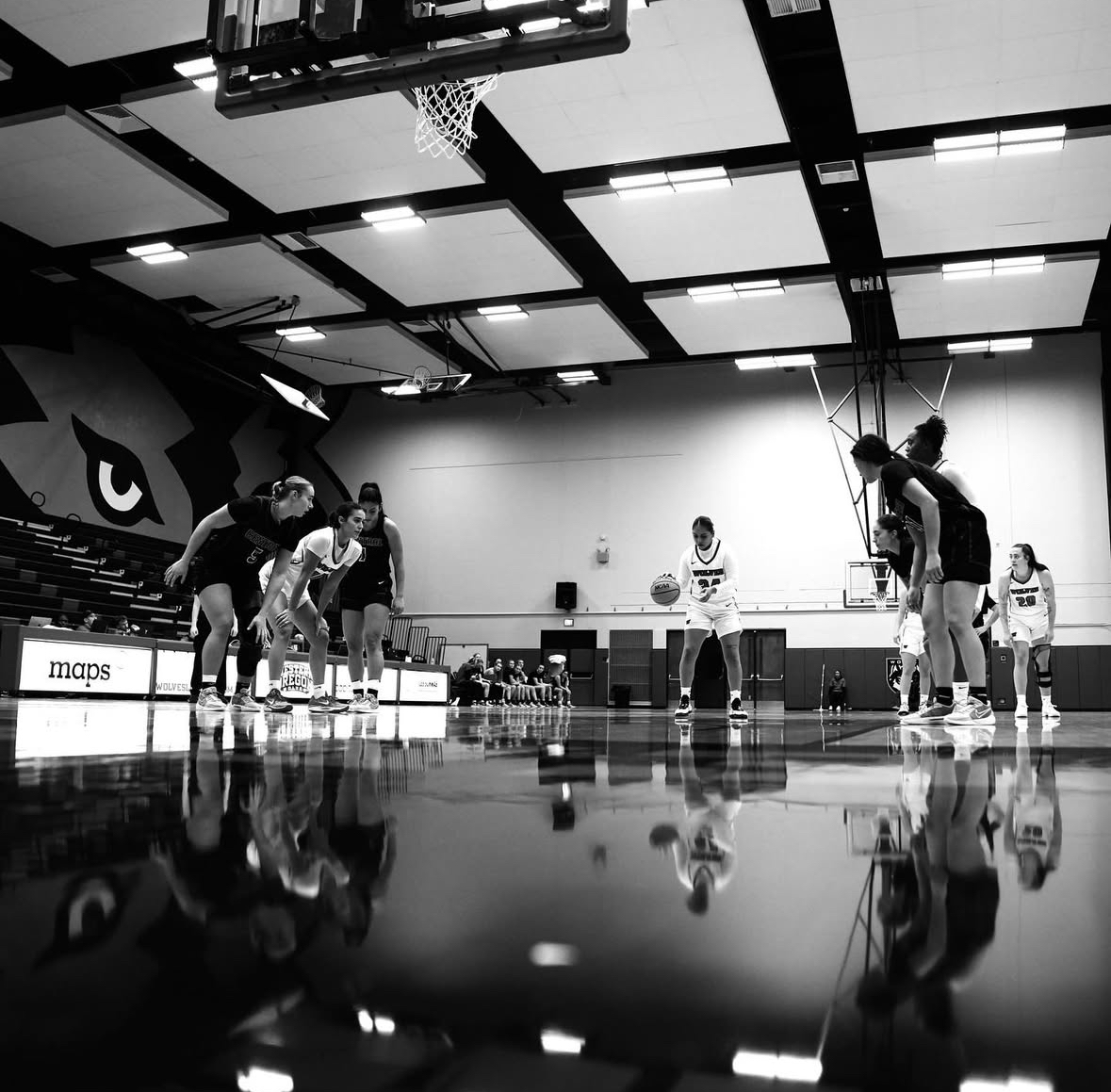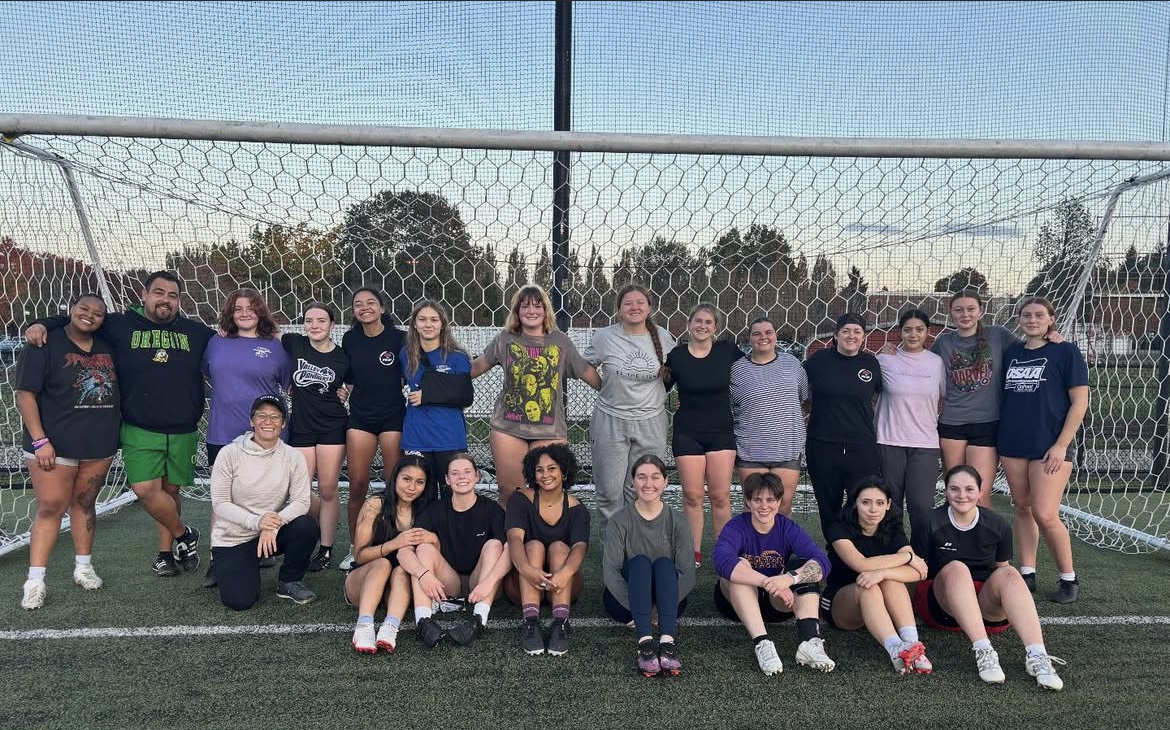
Nov. 19 2025 | Belen Ponce Leal | Lifestyle Editor
There is a legend involving the discovery of coffee and goats. Yes, there is. According to this legend, Kaldi was once a goat herder who noticed that after his goats ate the cherries of a specific tree in the ancient forests of the Ethiopian plateau, they became so hyper that they couldn’t sleep through the night. When Kaldi told the priest of the local monastery about the behavior, they decided to do a makeshift experiment where they turned the berries into a drink. After a few sips, they were saying the prayers with a boost of energy. The reason those cherries made everyone so jumpy was that they contained a lovely little drug most college students are utterly familiar with — caffeine.
Most adults are no strangers to caffeine. On average, 4 out of 5 adults consume it daily, myself included. This drug can be found in a lot of different things naturally, but the most common way people consume it is through drinks. The most popular caffeinated beverages are coffee, tea and energy drinks. While most people know what it is and what it does, most aren’t aware of what is a normal side effect of caffeine and what isn’t. Most view it as a harmless drug, because, for the most part, it is, as long as it is used responsibly. So, let’s dig into what makes the bitter taste so powerful.
The definition — According to WebMD, “caffeine is a natural chemical with stimulant effects.” It increases the activity of the brain and nervous system. Caffeine is closely associated with coffee, as it was isolated from the coffee bean by Ferdinand Runge in 1819. It is also a long-lasting drug, taking 5 to 30 minutes to kick in and staying in the body for up to 12 hours, depending on the person.
Purpose — The main reason everyone consumes caffeine is to increase alertness, enhance athletic performance and improve focus. Some also use it for other purposes like ADHD, asthma, low blood pressure and depression, though WebMD does state that there isn’t a lot of good scientific evidence to support the latter four uses.
Side effects — The effects of the drug can involve increased breathing, elevated heart rate and increased mental alertness as well as a boost in physical energy. It also has some side effects involving digestion and urination. Sometimes, people say that coffee can give them heartburn. A possible reason for that is that caffeine can increase the amount of acid in a person’s stomach. Some scientists theorize that because of the bitter taste that can come with the drug, it could lead to a buildup of acid-forming in the stomach. Caffeine is also a diuretic, which means that the body will want to urinate more when consumed.
Concerning side effects — For the most part, caffeine is safe for the heart for those who don’t have any preexisting heart conditions. It is possible, though, to have had an inordinate amount. Signs that a person has had too much caffeine could be shakiness, agitation, trouble sleeping, a racing heart and dizziness. It’s also possible for headaches, chest pain and severe anxiety to happen. WebMD notes that a 32-ounce energy drink has a much higher ability to give a person abnormally high heart rhythms and blood pressure.
Amount to have — If a person does not have any sort of underlying conditions, the maximum amount of caffeine someone can consume in a day is about 400 milligrams, which is the amount found in four cups of coffee. However, it is notable that energy drinks can contain a lot more caffeine. According to the Food and Drug Administration, energy drinks typically have 41 to 246 milligrams per can. My energy drink of choice is typically Red Bull. Lately, though, I have been drinking Monster since most people I know have them regularly. I haven’t really liked the taste of it, but I noticed that the drink caused me to feel off. My heart rate increased a lot, my hands were twitching and my chest would occasionally hurt. I found out that there is quite a difference between the two. A 16-ounce Red Bull, on average, contains 136 milligrams of caffeine while a 16-ounce Monster Energy drink has 160 milligrams. Granted, the difference is only 24 milligrams, but it was enough to affect me.
Who shouldn’t have it — Anyone who has any preexisting health conditions or is under the age of 18 could suffer serious health conditions or even death from having too much caffeine. Pregnant women are able to drink it as long as they don’t go over 300 milligrams. Caffeine can pass into breast milk, so limitations while breastfeeding are recommended.
Extreme cases — In 2023, Matthew Patrick, known more commonly as MatPat, made a video called “This Lemonade Could Kill You (Panera),” where he discussed a viral TikTok posted by user @sarachebaus. In her video, she discusses being unaware of how much caffeine is in a now-discontinued product served by Panera known as the “charged lemonade.”
The 20-ounce drink had 260 milligrams of caffeine in it, while the large size had 390 milligrams, which is only 10 milligrams away from being the recommended limit of a person’s daily caffeine intake. She also noted that she drank 4 or 5 of them a day, which would have been the equivalent of 11 Red Bulls, according to MatPat. Both he and @sarachebaus criticized Panera for the lack of any disclaimers of how much caffeine these drinks contained. Despite these drinks having way more of this drug than a typical energy drink, they were not labeled as such. They were only called “charged lemonades” and had in tiny lettering underneath the sign the amount of caffeine in a 20-ounce and a 30-ounce. MatPat then spoke about how potentially dangerous these drinks could be to those with preexisting heart conditions. As it turned out, he was right.
In September of 2022, a 21-year-old University of Pennsylvania student named Sarah Katz went into cardiac arrest shortly after having one of these drinks and passed away. According to USA Today, her family had sued Panera, explaining that she had a heart condition and would explicitly avoid any drinks that had caffeine in them. They accused Panera of being misleading in the marketing, as well as failure to provide labeling that better warned that these drinks were dangerous to those who had underlying health conditions. Another person, 46-year-old Dennis Brown, died from cardiac arrest in October of 2023 after drinking three charged lemonades. His family also sued Panera, explaining that he had high blood pressure and never consumed energy drinks.
Caffeine is a drug. Like any drug, people can become dependent on it. Withdrawal symptoms typically include crankiness, headaches, sweating, anxiety, fatigue and in some cases, muscle pain. Withdrawal can begin within 12 to 14 hours from the last sip taken and can last up to a week. It’s possible to break the dependence by steadily reducing the amount of caffeine being consumed. This gives the body time to adjust to being able to function without depending so much on the drug. So, be mindful of how much is consumed.
Contact the author at howllifestyle@mail.wou.edu








